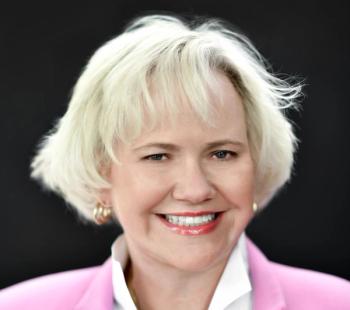
Worldwide Smartphone Study Models Correspondence Between Inactivity, Obesity
“Big data is not just about big numbers, but also the patterns that can explain important health trends,” says the NIH's Grace Peng. A new Stanford study used some huge data to track obesity.
Calling it “a larger dataset than for any previous human movement study,” researchers from Stanford conducted a National Institutes of Health-funded study of people’s activity levels. More specifically, over 717,000 people’s activity levels.
Using accelerometer data anonymously logged by individuals using the Azumio Argus app in over 100 countries, the researchers logged 68 million days of minute-by-minute step counting. One of the authors, Stanford University Professor of Bioengineering Scott L. Delp, PhD, said that the study was “over 1,000 times larger,” than any previous study of its kind.
The vast majority of users, about 90%, came from 32 high income nations in the study, with the rest of the countries deemed “middle income.” The average user logged 5,000 steps per day, but numbers varied widely across borders, and often across genders. The study narrowed in on 46 countries, each with over 1,000 app users.
Key in the study was the identification of activity inequality, or difference between the most and least active people in a given country. Those with the greatest inequality tended to have the highest rates of obesity: people in the five countries with the greatest degree of activity inequality were nearly 200 percent more likely, on average, to be obese.
Average activity, for example, was similar between the United States and Mexico. The difference between most and least active within the country, however, was far wider in the United States, and obesity is more prevalent.
Gender gap was also a massive determinant in obesity numbers. In Japan, the sexes were found to be about equally active, and obesity was lower than in the United States and Saudi Arabia, countries with chasms between the activity levels of men and women. “In fact, the gender gap accounts for 43 percent of activity inequality in those countries,” according to an official NIH press release on the work.
Grace Peng, PhD, directs the Computational Modeling, Simulation and Analysis program within the NIH’s National Institute of Biomedical Imaging and Bioengineering, which funded the study.
“I knew this was an exciting project because they were intent on studying millions of people and how they move about the world, and what causes them to move or not move,” Peng told Healthcare Analytics News. She pointed to the importance of simulation in the study to expand its magnitude.
“The data is so complex, and there’s so much of it, there’s a lot of interesting things to look at. This is a great study that’s an example of how data analytics can show correlations between things like activity and obesity. The data is the first part, but the simulations are where you can really test new hypotheses, ‘what if we added more steps’, that sort of thing.”
Peng says that such adjustments can be telling: in a simulation in which all those in the study were given 100 more steps per day, the recalculated obesity prevalence would drop about 2% worldwide. If all of the participants were brought closer to the mean step counts, she says, the drop would be even larger, indicating the sheer impact inactivity may have on obesity worldwide.
“Big data is not just about big numbers, but also the patterns that can explain important health trends,” she said in the
The study,






















































































